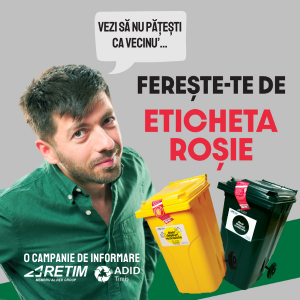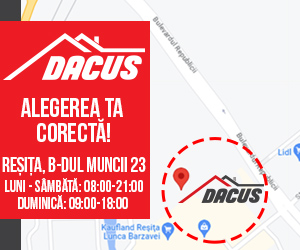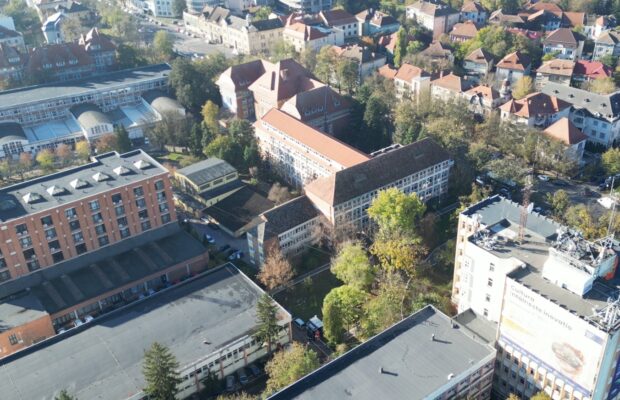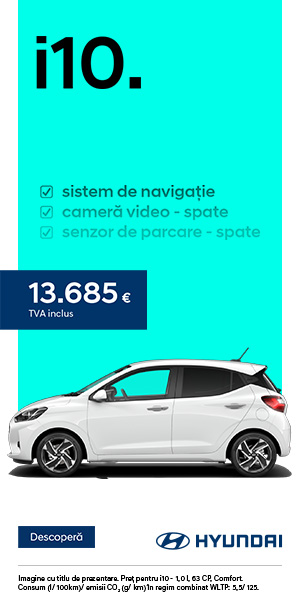Amateur Cinema Museum – “It Seemed Like a Sign to Keep Going”
De Express de Banat în 01 martie 2022, ora 9:00 AM
Not many people are aware of the existing Muzeul Cineastului Amator in Resita. Some fifty years ago, when the steel companies would fully bloom in Resita, its workers would find time and capabilities to make movies, even though they were amateurs. Museum in Resita contains a collection of photo and film cameras, numerous rolls and amateur workers’ films. I had a chance to speak with museum’s creator Andrei Bălbărău who shared with me more about how it all started for him when opening a museum, how his every day in the museum looks like and what does it mean to display and share the experience of amateur filmmakers from back then.
What is a cinema for you? What first words come to your mind when you hear this word?
I always have in mind the movie “Nuovo Cinema Paradiso” when I think about cinema. That was the movie that made me want to visit a cinema projection booth. It is one of those movies that show us a small glimpse of what happens behind the silver screen. We all see the movies, but we donot think about the industry behind it. We take for granted what are the years and years of dreaming, pioneering, inventing and reinventing, years of failures and successes, and of a will to never give up.
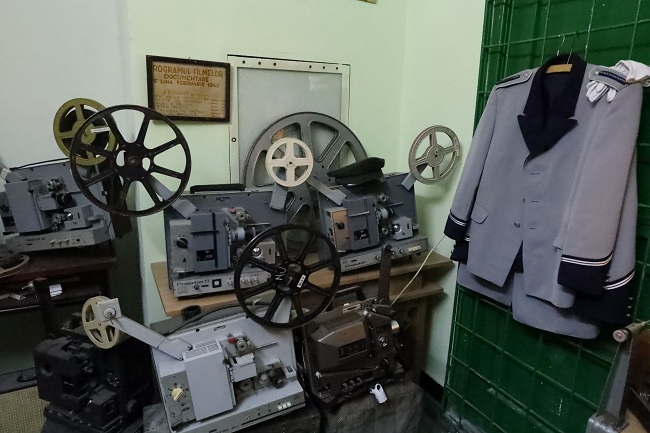
How did the museum and collecting start? What item was found first? What was the feeling back then?
It all started with finding the place where the films where projected at the university, the projection booth of “Cinematograful 23 August”. It still had the original 35mm projectors and a 16mm portable projector. A few months before that, I did an event regarding the first projections made by Lumiere Brothers, event that included a visit to the local cinema (we visit the projection booth) and back then I thought how great it would be to have a museum in that room. I was amazed that there is a similar room at the university, and that the idea for a museum was eventually supported by university.
Did you have any storage room? How did you get this space?
The collection started after the finding of the old projection booth. The university accepted the idea of transforming the space into a museum, and therefore provided a space for the future collection. So, for a long period, the projection booth was mostly used for storage. Now, 90% of the museum space is used for exhibiting the collection and the remaining rest is the storage area.
How did you manage to get this whole collection together? The rolls, cameras, projectors?
It is all about time. Every collection is completed in time (I am still collecting). Today it can be a camera, tomorrow a projector, and so on. Buy today – display tomorrow. As soon as the museum was opened, I started getting donations from former filmmakers or people who had different things related to this field and could not simply throw them away.
What is so special and important about the movies of that time? Amateur movie collections – what are they actually?
Every state company had a cinema club – “cineclub”. They made various films, maybe the ones related to safety and different events. But what is the most important is that the movies (and I am talking here about the movies made in Resita) managed to capture various aspects of the city and its people. We can see a parade of 23rd August as an opportunity to find relatives or maybe even themselves in a film. They are a way to travel back to the past, and discover a new (old) Resita.
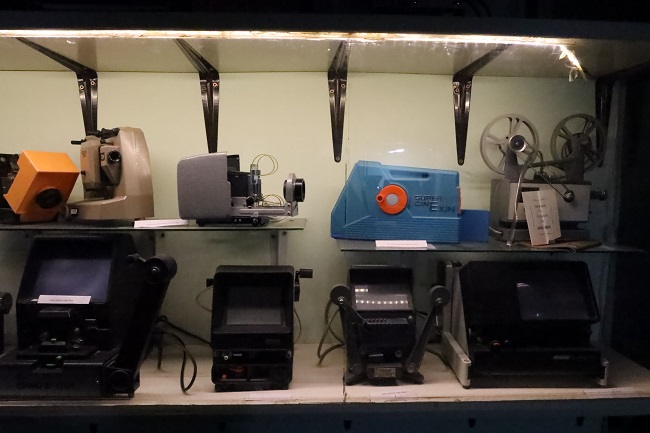
How did the workers manage to make those films?
The Cineclub was financed by the factories in Resita. So, corporate had finances for equipment and materials. The process was similar to making a film nowadays. Workers would write a script, be involved as actors also. The sound would be recorded on magnetic tape, workers then developed the film and edited it. Usually, these films had a bit of propaganda in them (imposed by the people from the communist party) but that did not mean that they were bad. The movies were artistic and well-done. Being an amateur did not mean you were not good at filmmaking.
What is your favorite activity or routine at the museum? Could it be unpacking the rolls, putting the pieces together and matching? Why?
I would say that it is the viewing of the films made by amateur filmmakers on the editing machine. There is always a mystery of what might be on a film spool, and I always hope that I will find something rare, a small glimpse of something that now is missing (an old building never seen on film, an event, a famous person). That also applies when I am scanning 35mm films.
Do you have any specific plans for the museum in the nearest future? Are you planning on having more visits or organizingan exhibition?
At the moment, the biggest collection of the museum contains the 16mm and 8mm camera collection which is maybe the largest movie camera collection in Romania. It is being displayed at the exhibition only for the Night of Museums. I want to make an arrangement in order for entire collection to be seen all the time, not just once a year. With the cameras being showcased, I will free up some space at the museum, so I will be able to start working on transformation of current storage room into another exhibition room. Every year I am trying to bring something new for the Night of Museums (and sometimes it is not really connected to the world of amateur filmmakers). Since this year Resita it is celebrating 150 years of the first locomotive being built, maybe a new exhibition will be held in this field.
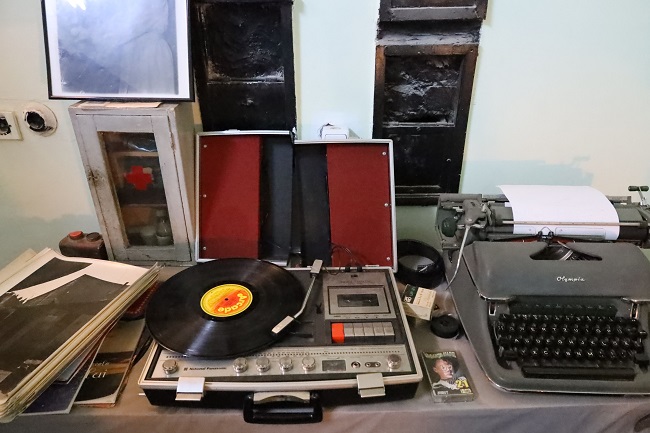
What do you think the visit of this museum can bring up to people? Why would it be beneficial to explore it more?
Well, it is the only museum in Romania that gives the visitors an opportunity to find out the world of amateur filmmakers. Besides, itis not only about the filmmakers in Resita – it is about amateur filmmakers at a national level. All the cities had cineclubs, an equipment was probably more or less the same. Therefore, it is a small museum that tackles a subject at a national level. It could fire a spark in visitors to find out more about the amateur filmmakers from their city.
Andrei, I remember you once told me a nice story about finding two pieces of a film… Could you share with us?
It is a strange and funny fact. Somebody sent me a 35mm film to find out the content. As I watched it, the end of it seemed to be somewhat known, like as if I had seen it before. So, I searched through the films I had and I discovered another roll with… the same film. More than that, it looked as if the film was split in a similar scene… like where one film ended, the other seemed to continue. Just one of those coincidences or signs tell me that I am on the right path, to keep going with the cinema museum.
Autor: Anastasiia Zhmankova
Vă recomandăm...
Știrile zilei

Reșița rămâne fără apă! Artrom Steel Tubes va întrerupe alimentarea de apă brută către municipiu
Alina Dragomir | 21 octombrie 2024Reșițeni, pregătiți-vă rezerve de apă potabilă, pentru că joi, 24 octombrie, pe durata întregii zile, robinetele vor fi închise! Societatea Aquacaraș informează toți consumatorii Reșiței, că joi, 24 octombrie...

Reguli clare la Timișoara privind construcția noilor cartiere pe fostele zone industriale
Adriana Mîț | 21 octombrie 2024Primăria Timișoara a pregătit un regulament clar privind construcția noilor cartiere pe locul fostelor platforme industriale. Toate obiectivele publice, de la străzi și trotuare la rețele de utilități, școli...
-
 Alina Dragomir |
21 octombrie 2024
Alina Dragomir |
21 octombrie 2024
Reșița rămâne fără apă! Artrom Steel Tubes va întrerupe alimentarea de apă brută către municipiu
-
 Caterina Ledrer |
21 octombrie 2024
Caterina Ledrer |
21 octombrie 2024
-
 Caterina Ledrer |
21 octombrie 2024
Caterina Ledrer |
21 octombrie 2024
-
 Adriana Mîț |
21 octombrie 2024
Adriana Mîț |
21 octombrie 2024
Cătălin Drulă îi răspunde lui Grindeanu: Timișenii nu au uitat cine s-a făcut preș pentru Dragnea
-
Termeni și condiții
Informaţiile publicate de expressdebanat.ro pot fi preluate doar în limita a 500 de caractere şi cu citarea sursei cu link activ. Orice abatere de la această regulă constituie o încălcare a Legii 8/1996 privind dreptul de autor. Vezi termeni și condiții ANPC SOLCONTACT
Tel./Fax: 0355.429.481
WhatsApp: 0723.101.061
contact@expressdebanat.ro
publicitate@expressdebanat.ro
Reșița, Str. Făgărașului Nr. 10
Facebook
YouTube
Toate drepturile rezervate. © 2024 Express de Banat. ISSN 2248 – 1281






